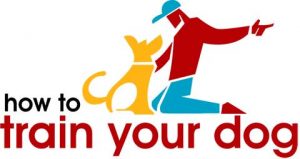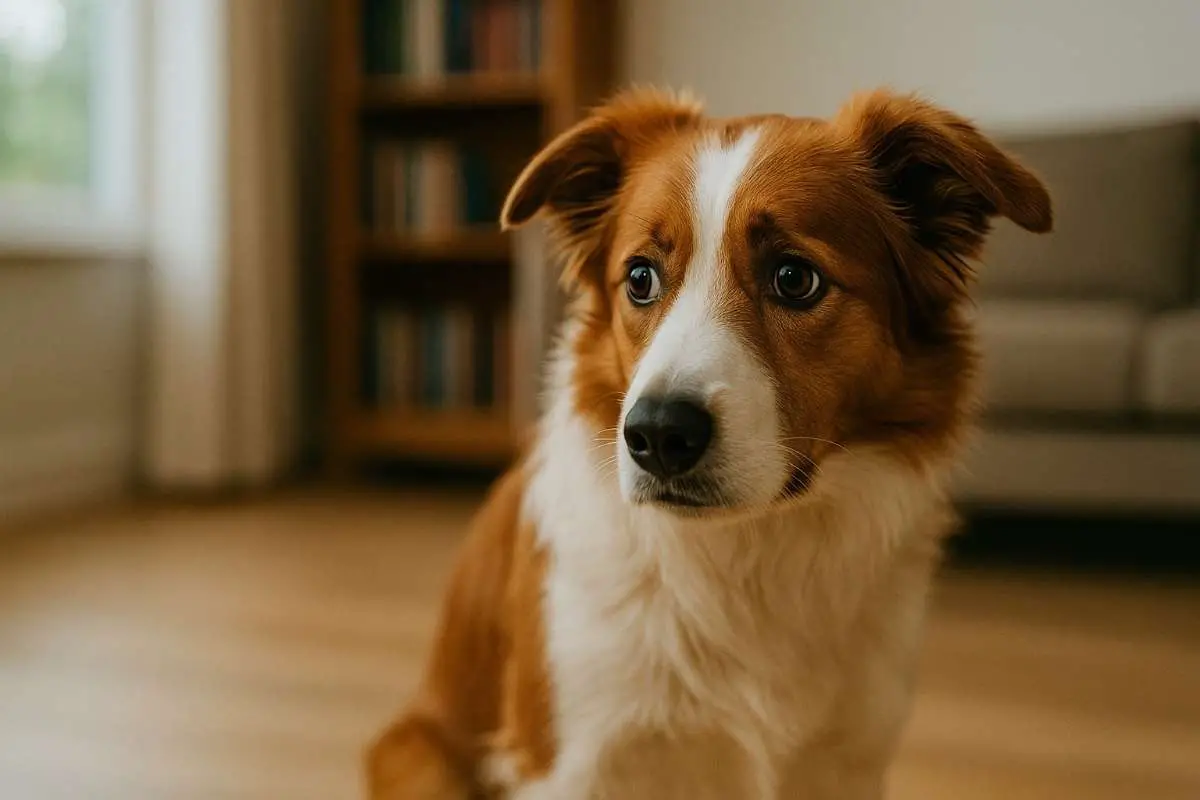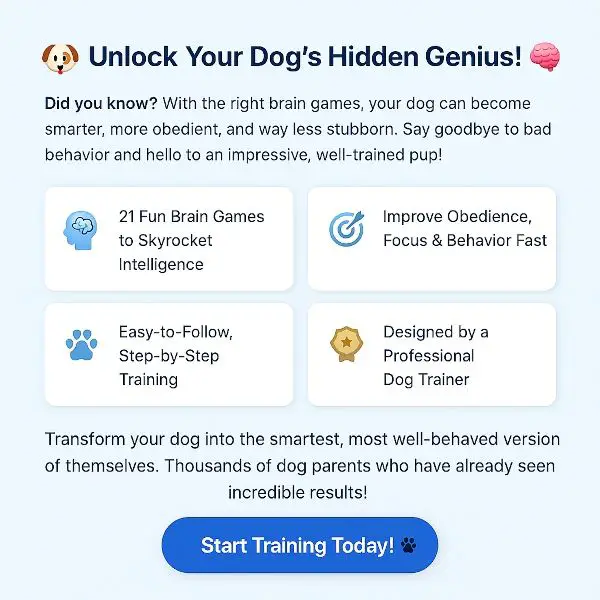As a loving dog parent, the last thing you want is to make your furry best friend anxious. But what if, despite your best intentions, you’re unknowingly doing things that are triggering your dog’s stress? Anxiety in dogs isn’t always obvious—sometimes it’s hidden behind subtle behaviors like excessive yawning, lip licking, pacing, or even just avoiding eye contact.
If you’ve noticed your dog seems more on edge lately—or if you’re just committed to being the best human your dog could ask for—this article is for you.
Below, we’ll walk you through 7 surprising and common ways dog owners unintentionally create anxiety in their pets, backed by behavioral science and real-world experience. More importantly, we’ll give you actionable tips to fix them. Let’s dive in.
1. Inconsistent Routines
Dogs thrive on routine. It gives them a sense of predictability and control in their world. When feeding times, walks, playtime, and bedtime vary wildly day-to-day, it can leave your dog feeling confused and insecure.
Why it matters:
Dogs are creatures of habit. Uncertainty creates stress. If your dog never knows when they’ll be fed or walked, it builds tension and disrupts their internal clock.
What to do instead:
Try to keep a regular daily schedule. You don’t have to be rigid, but feeding and walk times should happen within a consistent window every day. Even small consistencies—like always greeting your dog the same way when you return home—can be incredibly calming.
2. Overuse of Commands Without Clarity
Ever catch yourself saying “no” 10 times without showing your dog what you do want instead? Or repeating a command over and over—“sit, sit, SIT!”—until your voice rises and frustration creeps in?
Why it matters:
Mixed signals confuse dogs and shake their confidence. Anxiety grows when a dog doesn’t understand what’s expected or fears doing the wrong thing.
What to do instead:
Train with clear, simple commands. Reinforce the desired behavior with positive reinforcement like treats, praise, or toys. Avoid punishment or frustration. If your dog doesn’t respond, ask yourself: Have they actually learned the command yet? Be patient, and make learning a game, not a stress test.
3. Ignoring Their Body Language
Dogs speak volumes without saying a word. They communicate their stress through subtle cues like whale eye (showing the whites of their eyes), tucked tails, yawning when not tired, or pacing. If you miss these signs, you may unknowingly push them past their comfort zone.
Why it matters:
Ignoring your dog’s nonverbal signals teaches them that communication doesn’t work—and that’s scary. This often results in shutdown behavior or even reactivity down the line.
What to do instead:
Become fluent in “dog.” Observe your dog’s posture, ears, tail, and facial expressions. If your dog seems unsure, take a step back. Give them space. Comfort them calmly if needed. By honoring their signals, you build trust and reduce anxiety.
4. Too Much Alone Time
Modern life is busy. Between work, errands, and social life, many dogs are left home alone for long hours. Even independent dogs can become anxious when left too often with little stimulation or companionship.
Why it matters:
Dogs are social creatures. Extended isolation leads to separation anxiety, boredom, and even depression. You might come home to chewed furniture or potty accidents—symptoms, not spite.
What to do instead:
If you work long hours, consider a dog walker, daycare, or a pet-sitter for mid-day breaks. Leave puzzle toys, treat-dispensing balls, or even calming music. Most importantly, when you are home, be fully present. Even 15 minutes of focused play or cuddles goes a long way.
- RICH FEEDING GAME – Look at the Big Orange Flower in the middle of the snuffle mat dog puzzle toys. Total 4 layers of orange petals can hide large...
- EXTRA FUN ATTRACTS YOUR PUPPY – We are extremely positive of our snuffle mat. But in order to provide more fun for lovely puppies, we set up 4...
- EXCELLENT RELEASE BUCKLE DESIGN – Have you ever bought a snuffle mat for your dog that want to develop good habits in your dog. But your dog likes...
Last update on 2025-01-13 / Affiliate links / Images from Amazon Product Advertising API
5. Loud Environments or Sudden Noises
Many owners forget that their dog’s hearing is several times more sensitive than ours. Yelling, vacuum cleaners, fireworks, thunderstorms, or even loud music can be overwhelming.
Why it matters:
Repeated exposure to loud or unpredictable sounds without escape options creates chronic stress. Some dogs develop phobias or even aggression when they’re constantly startled.
What to do instead:
Create a quiet, safe zone for your dog—preferably in a room with a cozy bed, soft lighting, and low noise. Use white noise machines during loud events. During storms or fireworks, close windows, lower blinds, and comfort them gently. For highly anxious dogs, talk to your vet about desensitization techniques or calming supplements.
- Less Waste More Green: This device does not include a power adaptor. Included in the box is a Type C charging cable. We encourage you re-use current...
- Night Light: Touch and hold to the touch ring on the top to turn on/off lights. A simple tap to cycle through all different lights and adjust...
- High-Fidelity Soothing Sounds: Features 20 high-fidelity soothing sounds including 4 white noises, 4 fan noises, 9 nature sounds, and 3 lullabies,...
Last update on 2025-07-06 / Affiliate links / Images from Amazon Product Advertising API
6. Lack of Mental Stimulation
Physical exercise is important—but so is mental work. Dogs that aren’t challenged mentally can develop anxiety from boredom, frustration, or under-stimulation.
Why it matters:
A tired dog isn’t just one who’s had a walk. Dogs are intelligent animals with an innate need to problem-solve, sniff, explore, and learn. Without that outlet, they get restless and anxious.
What to do instead:
Mix up the routine. Use treat puzzles, snuffle mats, or frozen KONG toys. Teach new tricks or reinforce old ones. Let them sniff during walks—it’s mentally enriching. Rotate their toys weekly to keep things fresh. Mental exercise calms a dog like meditation does for humans.
Last update on 2025-07-01 / Affiliate links / Images from Amazon Product Advertising API
7. Unintended Emotional Mirroring
Here’s a truth most owners overlook: Your dog mirrors your emotions.
If you’re often anxious, stressed, angry, or overwhelmed, your dog will pick up on that energy—even if you never say a word. Dogs are emotionally intuitive. They read your tone, posture, and energy. Your emotional world becomes theirs.
Why it matters:
If your dog lives in a home filled with tension, unpredictability, or emotional highs and lows, they’ll often begin to exhibit anxious behaviors—even when nothing external has changed.
What to do instead:
Be mindful of the energy you bring into your home. Ground yourself before walking through the door. Practice calming rituals together—deep breathing with your dog beside you, gentle grooming sessions, or simply relaxing on the floor with them in silence. It soothes both of you.
Final Thoughts: Compassion is the Cure
The truth is, anxiety in dogs often comes not from big traumatic events—but from everyday life being just a bit too much for a sensitive soul.
The good news? Once you become aware of the small things that matter to your dog—the rhythms, the signals, the energy—you gain the power to create peace in their world. And they’ll repay you with the kind of unconditional love and loyalty that only a dog can give.
You don’t have to be perfect. You just have to be present, consistent, and aware.
Your dog isn’t expecting a flawless human—just one who listens with their heart.
Checkout Our Favorite Dog Products
1. BEST PUPPY TOY
We Like: Snuggle Behavior Toy with Heart Beat & Heat Pack – Ideal toy for new puppies.
2. BEST DOG TRAINING PROGRAM
We Like: Doggy Dan The Online Dog Trainer – Stop any dog problem and raise the perfect puppy with The Online Dog Trainer.
3. BEST DOG DNA TEST
We Like: Embark Dog DNA Test – Embark screens for over 250 dog breeds + tests for 170+ genetic diseases including MDR1 drug sensitivity, glaucoma, degenerative myelopathy, and dilated cardiomyopathy, some of the most common adult-onset diseases in dogs.
4. BEST DOG PUZZLE TOY
We Like: Outward Hound Interactive Puzzle Toy – Every dog loves chasing squirrels at the park. The Outward Hound Hide-a-Squirrel Puzzle Toy gives your dog the same feeling as though he was outdoors chasing live squirrels.
5. Best Calming Treats for Dogs
We Like: FurroLandia Hemp Calming Treats – These soft chews will calm your dog so it can peacefully endure stressful situations, such as long car trips, visiting unfamiliar places, or hearing Thunder. Ideal for all dog breeds & sizes.





